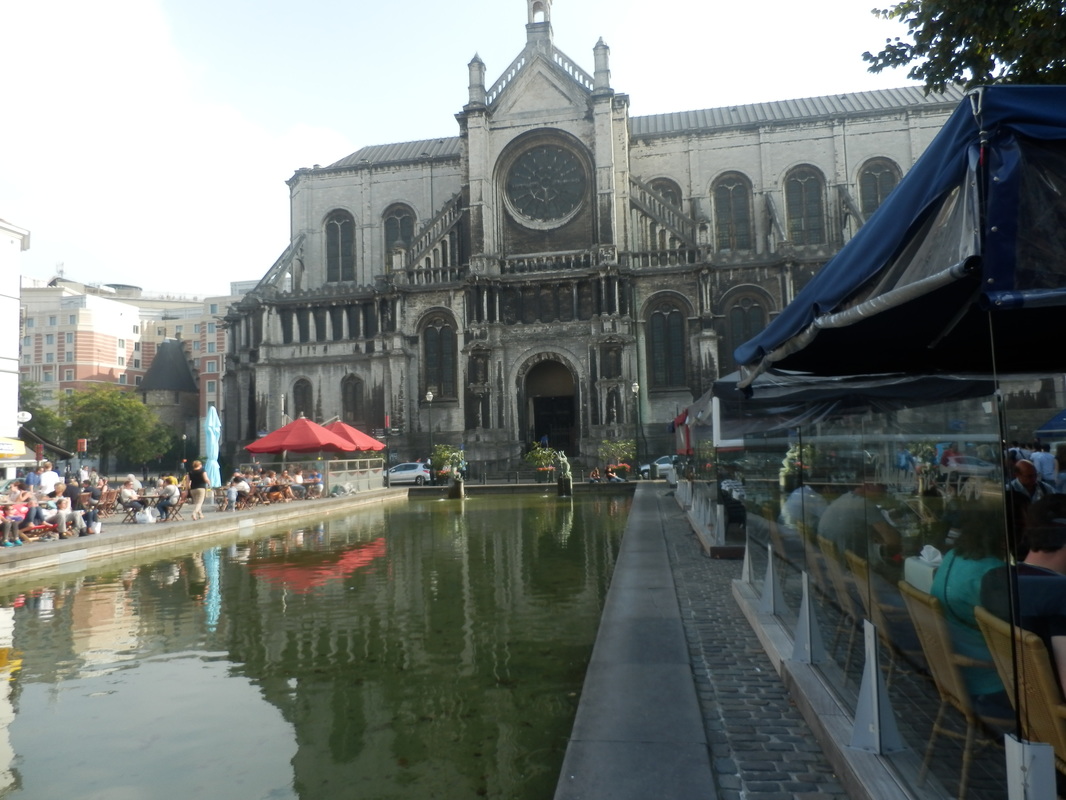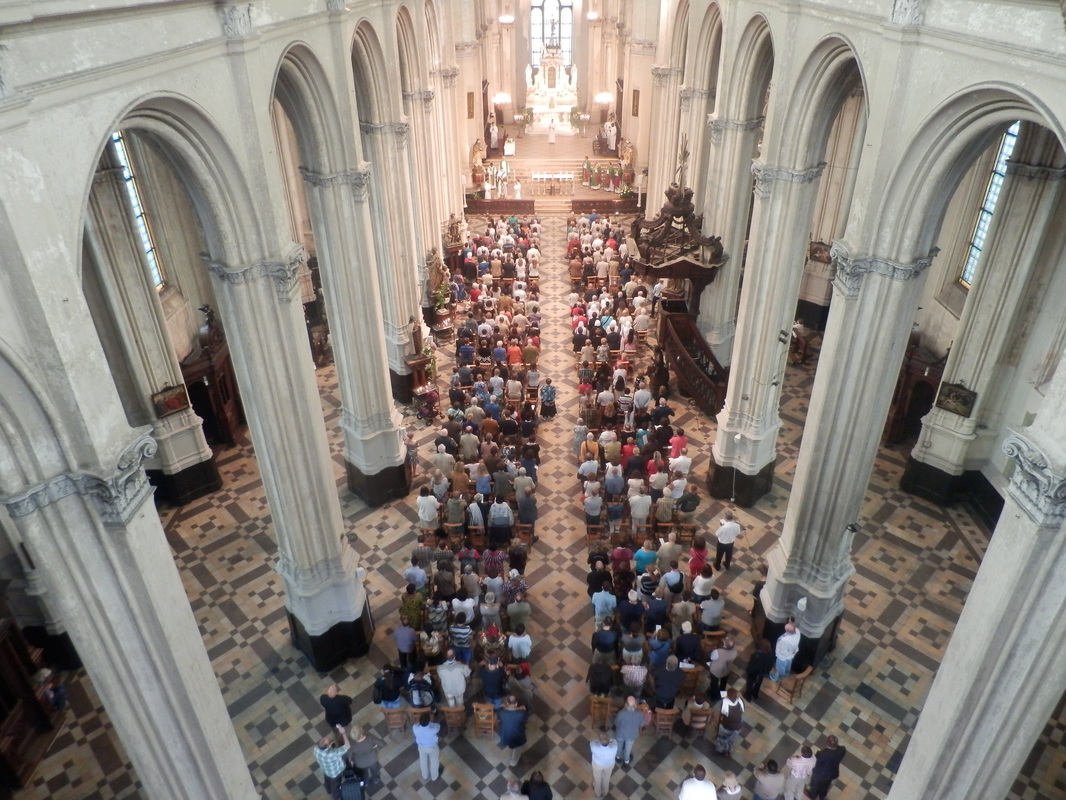Church of St. Catherine |
vertical divider
is the work of the outstanding architect Joseph Poelaert, the creator of the monumental Palace of Justice project. The temple was built in place of the old church, built in the 15th century. The work went on at a dizzying pace. Construction began in 1854 and after twenty years, in 1874, the church was consecrated.
|
Wewnątrz świątyni można podziwiać XV-wieczną figurkę Czarnej Madonny z Dzieciątkiem (stoi na ołtarzu, za szkłem). W trakcie zamieszek, w 1744 roku, protestanci wrzucili posąg do rzeki Senne. Został wyłowiony i od tego czasu jest otoczony szczególnym kultem. Wśród wyposażenia wnętrza warto zwrócić uwagę na, wykonaną w drewnie, zabytkową ambonę i konfesjonał.
W kościele znajduje się również grobowiec francuskiego księdza Antoine Arnaulda (1612-1694), który ostatnie 15 lat życia spędził na wygnaniu w Brukseli. Był on zwolennikiem Biskupa Ypres Corneliusa Janseniusa, twórcy jansenizmu, ruchu teologiczno-duchowego w kościele katolickim, zakazanego przez Papieża Innocenta X, a następnie przez Klemensa XI.
W kościele znajduje się również grobowiec francuskiego księdza Antoine Arnaulda (1612-1694), który ostatnie 15 lat życia spędził na wygnaniu w Brukseli. Był on zwolennikiem Biskupa Ypres Corneliusa Janseniusa, twórcy jansenizmu, ruchu teologiczno-duchowego w kościele katolickim, zakazanego przez Papieża Innocenta X, a następnie przez Klemensa XI.
The church stands on the site of a former river port. Since the 16th century, Brussels has been connected to the sea by a canal, which was used to transport the products of craft guilds to markets around the world at that time. In 1870 the river road was filled in, the port was moved northwest of the center, and the current church square was built on the site of the salt and grain quays. The tradition of this place, despite the already filled-in port basins, is still alive.
This is where the largest restaurant district is located. Mussels, seafood, and fish are served here. The square is closed by a twenty-meter-high fountain-monument, created by the sculptor G. de Vreese. The Anspach Fountain commemorates the great mayor of Brussels, Jules Victor Anspach (1829-1879), who initiated a thorough modernization of the capital's infrastructure, carried out in the 80s of the 20th century.
This is where the largest restaurant district is located. Mussels, seafood, and fish are served here. The square is closed by a twenty-meter-high fountain-monument, created by the sculptor G. de Vreese. The Anspach Fountain commemorates the great mayor of Brussels, Jules Victor Anspach (1829-1879), who initiated a thorough modernization of the capital's infrastructure, carried out in the 80s of the 20th century.
Several dozen meters behind the church of St. Catherine, there is Tour Noire. The Black Tower is a fragment of one of the city's first defensive walls, built in the 12th century. It is integrated into the surrounding modern hotel. This connection is a perfect example of the authorities' disregard for historical and architectural heritage in Belgium, and especially in Brussels.
Also the church of St. Catherine is an example of such an approach. In 2012 the temple was closed and the authorities immediately decided to desacralize it. There were plans to create a market within the walls of the church! Ultimately, thanks to the action of outraged city citizens, priests and local entrepreneurs, this decision was withdrawn and the church is still an active temple. Unfortunately, of the 110 churches existing in Brussels, approximately 40 will meet such a sad end. The ignorance of the city authorities has reached such an extent that they allow toilets to be built near the outer walls of churches. It is also sad that fewer and fewer Belgians see something inappropriate in it.
|
Address:
Place Sainte Catherine 50
1000 Brussels |
Opening hours:
monday-friday: 9.30-20.00
saturday: 9.30-18.30 sunday: 9.30-17.30 |
Ticket price:
Free entrance
|

